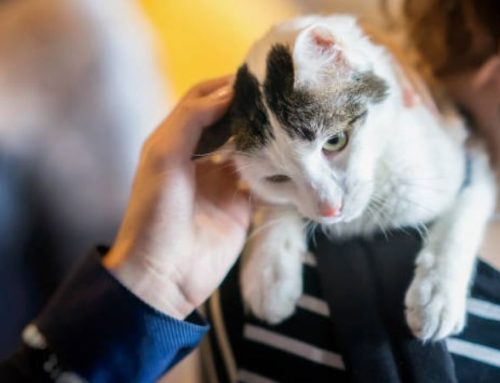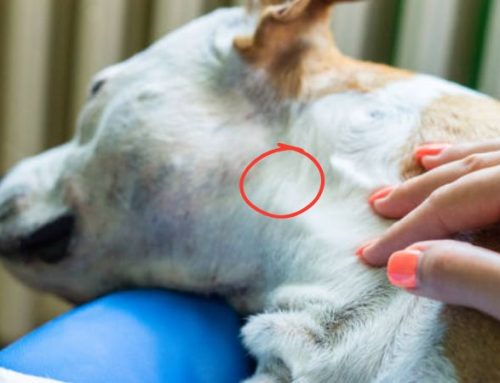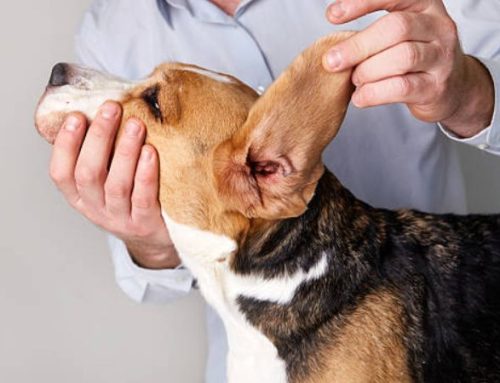Houseplants and flowers can transform any space, adding color, texture, and life but for curious cats, not every plant is safe. Many common blooms and greenery that brighten our homes contain toxins that can cause serious illness in cats, from mild stomach upset to life-threatening organ damage.
Because cats are naturally inquisitive and often nibble on leaves or flowers, it’s important for pet owners to know which plants are risky. This vet-approved guide highlights the most common flowers and plants that can harm your feline friend, helping you keep your home both beautiful and safe.
Can Cats Be Allergic to Flowers?
Yes, cats can develop allergic reactions to flowers, but it’s important to understand the distinction between allergy and toxicity.
- Allergy occurs when a cat’s immune system reacts to normally harmless substances, such as pollen or plant proteins. In this case, the cat’s body mistakenly identifies these particles as dangerous, triggering an immune response that leads to inflammation, histamine release, and various symptoms. Allergies usually manifest through respiratory or skin issues and are often seasonal, coinciding with the pollination period of specific plants.
- Toxicity, on the other hand, happens when a cat ingests a harmful plant. Certain flowers and houseplants contain compounds that are poisonous to cats. Unlike allergies, toxicity can cause more severe and acute symptoms, including vomiting, diarrhea, organ damage, or even death, depending on the plant and the amount consumed. Examples include lilies, tulips, sago palms, and oleanders.
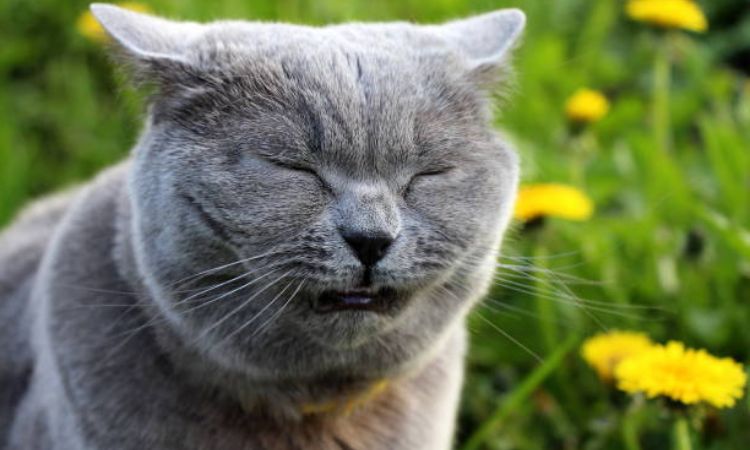
Common Signs of Flower Allergies in Cats
When a cat is allergic to flower pollen or plant proteins, symptoms tend to be milder than full-blown toxicity but can still significantly affect their comfort and quality of life. Typical signs include:
- Respiratory symptoms: sneezing, mild coughing, wheezing, or nasal discharge
- Eye symptoms: watery or irritated eyes
- Skin symptoms: itchiness, redness, scabs, or lesions
- Behavioral signs: excessive grooming, rubbing the face on furniture or walls, or pawing at the ears
These reactions usually appear during the times of the year when the pollen count is high and often resolve when exposure is minimized.
When to Suspect a Flower Allergy
Not all sneezing, coughing, or skin irritation in cats is caused by flowers. Consider a flower allergy when:
- Symptoms are seasonal, appearing primarily during spring, summer, or fall when local flowers are pollinating
- The cat has no recent changes in diet or new medications
- There is limited exposure to other common allergens such as dust, perfumes, cleaning chemicals, or smoke
Other potential causes, like food allergies, flea bites, or environmental irritants, should be ruled out by a veterinarian, especially if symptoms persist outside the pollen season or are severe. Proper diagnosis may involve a combination of physical examination, allergy testing, and monitoring the cat’s environment.
How Flower Toxicity Affects Cats
While flowers and houseplants can brighten a home, they also carry hidden dangers for cats. Not all plants are equally harmful—some may cause only mild irritation, while others can lead to serious poisoning or even life-threatening kidney failure, as is the case with lilies. Understanding the range of risks is crucial for any cat owner who wants to keep their pet safe.
General Signs of Flower Poisoning
When a cat ingests a toxic flower or plant, symptoms can vary depending on the type and amount consumed. Common warning signs include:
- Drooling or excessive salivation
- Vomiting and diarrhea
- Loss of appetite or refusal to eat
- Lethargy or unusual weakness
- Wobbly walking or lack of coordination
- Seizures or tremors in severe cases
- Changes in urination, including increased or decreased frequency, or signs of kidney distress
Even mild symptoms should be taken seriously, as some toxins can cause cumulative damage over time, and early intervention is often the key to preventing more severe outcomes.
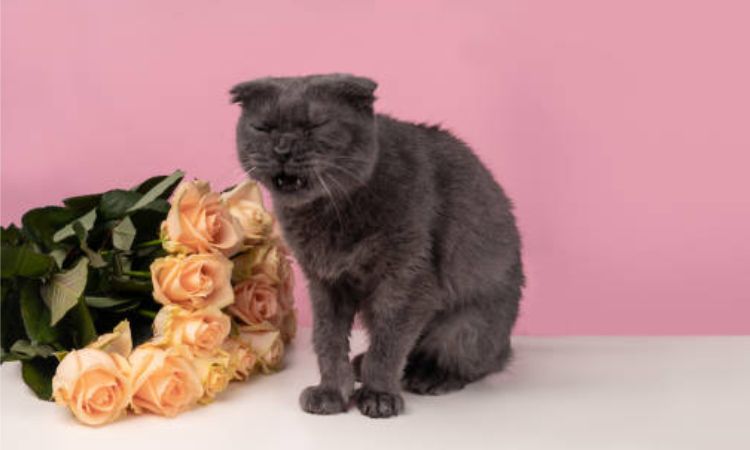
Why Cats Are Particularly High-Risk
Cats are naturally at higher risk for plant-related poisoning for several reasons:
- Small body size – Even a small amount of a toxic plant can deliver a relatively high dose of harmful chemicals.
- Fastidious grooming habits – Cats ingest pollen, sap, or plant material when grooming themselves after touching or brushing against a plant.
- Curiosity and chewing tendencies – Despite being obligate carnivores, many cats are drawn to nibble on leaves, stems, and flowers, especially if they are drawn to the texture or smell.
Because of these factors, common household plants and floral arrangements that seem harmless to humans can become dangerous to a curious cat. Prevention is key: keep toxic plants completely out of reach, supervise outdoor access, and consider safer alternatives like African violets, orchids, or marigolds.
Most Dangerous Flowers for Cats (Avoid Completely)
If you have a cat, there are certain flowers that should never be in your home, even in tiny amounts. Some blooms are so toxic that just brushing against them or ingesting a small part can trigger life-threatening reactions. Understanding which flowers pose the greatest risk can help you protect your feline companion.
Lilies (The Number-One Danger)
True lilies including Asiatic lilies, Day lilies, Easter lilies, Japanese Show lilies, and Tiger lilies—are the most toxic flowers for cats. Every part of the plant is dangerous: petals, leaves, pollen, stems, and even the water in a vase can be lethal. Cats often ingest pollen or plant material while grooming, which can lead to acute kidney failure within 24 to 72 hours if not treated immediately.
Early symptoms of lily poisoning often appear within hours and include:
- Vomiting
- Drooling
- Loss of appetite
- Lethargy
Late-stage symptoms may develop within a day or two:
- Increased thirst and urination
- Signs of kidney distress or failure
Even minor contact with lily pollen on a cat’s fur constitutes an emergency. If you suspect your cat has come into contact with any part of a lily, seek immediate veterinary care. Prompt treatment, such as induced vomiting and intravenous fluids, can dramatically improve survival.
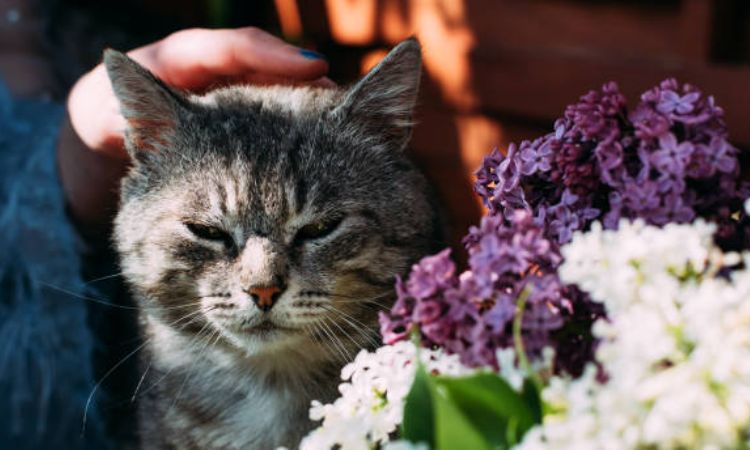
Other Highly Toxic Blooms
While lilies top the list, several other flowers are extremely dangerous for cats. Awareness of the most hazardous species is essential:
Tulips and Hyacinths
- Risky parts: bulbs are the most toxic, though all plant parts can be harmful.
- Key symptoms: drooling, vomiting, diarrhea, and lethargy; large ingestions can cause depression and lethargy.
Daffodils
- Risky parts: bulbs and flowers.
- Key symptoms: stomach upset, drooling, vomiting, diarrhea, tremors. Severe cases can lead to cardiac arrhythmias, low blood pressure, and respiratory changes.
Amaryllis
- Risky parts: all parts, especially the bulbs.
- Key symptoms: gastrointestinal upset, vomiting, diarrhea, tremors, and changes in blood pressure. Large amounts can cause more serious complications.
Foxglove, Oleander, and Other Cardiac Plants
- Risky parts: all parts of the plant, including leaves and flowers.
- Key symptoms: affect the heart directly; may cause abnormal heart rhythms, weakness, collapse, or sudden death. These plants are considered extremely high-risk and should never be accessible to cats.
Autumn Crocus (Colchicum)
- Risky parts: all parts of the plant.
- Key symptoms: severe gastrointestinal upset, vomiting (possibly with blood), diarrhea, abdominal pain, organ damage, and potentially fatal outcomes. Symptoms can appear immediately or develop over several days, making early intervention critical.
Other Common Flowers That Can Make Cats Sick
Even if they’re popular in bouquets or gardens, many flowers can still make your cat unwell if chewed or ingested. It’s important to know which varieties pose a risk, even if they aren’t considered as dangerous as lilies or foxglove.
Bouquet and Garden Favorites
Several flowers commonly used in arrangements or planted outdoors can cause gastrointestinal distress or other symptoms in cats:
- Chrysanthemums and Daisies – While often bright and cheerful, these flowers contain compounds that can trigger drooling, vomiting, diarrhea, and skin irritation if nibbled on.
- Azaleas and Rhododendrons – These garden favorites are more serious. Ingestion can lead to gastrointestinal upset, tremors, or even heart and neurological problems in severe cases. Even small amounts of leaves or flowers can be risky.
- Cyclamen and Kalanchoe (Widow’s Thrill) – Popular indoor plants that can cause stomach upset, and in larger quantities, may affect the heart and rhythm. Cats are particularly sensitive if they chew on bulbs or leaves.
- Irises, Gladioli, and Crocuses – These flowering plants mainly cause gastrointestinal irritation, with the bulbs being the most toxic part. Chewing or accidental ingestion during play can lead to vomiting, diarrhea, or lethargy.
Non-Toxic but Still Irritating
Even flowers considered non-toxic can sometimes cause mild problems in cats:
- Excessive nibbling or sniffing can lead to stomach upset or vomiting.
- Flowers with heavy perfumes or lots of pollen can irritate a cat’s eyes, nose, or respiratory system, especially for cats with allergies or sensitive airways.
Examples include roses, freesias, and other fragrant bouquet flowers that are generally safe but should still be offered with caution.
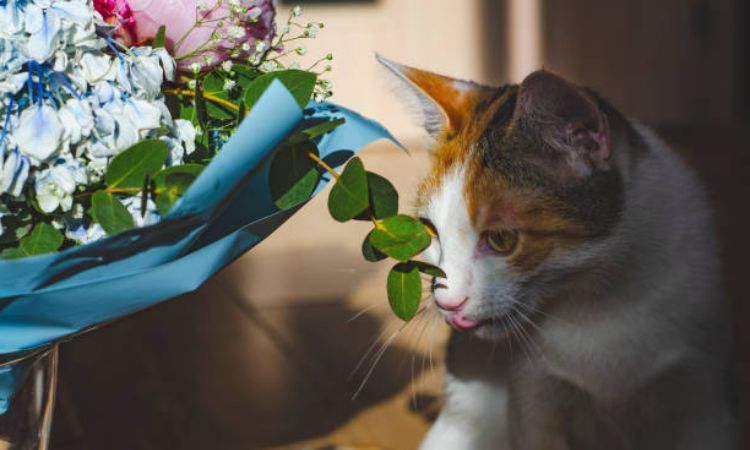
Cat-Safe Flowers and Blooms to Choose Instead
Just because you share your home with a cat doesn’t mean you have to give up the beauty and fragrance of flowers. With a little care and knowledge, you can safely enjoy floral arrangements while keeping your feline friend out of harm’s way. The key is choosing blooms that are non-toxic and supervising your cat’s interactions to prevent accidental chewing or ingestion.
Commonly Considered Safer Options
Several flowers are widely regarded as safe for cats and can be used to brighten your home without posing a serious risk:
- Roses – Classic and beautiful, roses are non-toxic, but you should watch out for thorns and avoid pesticides or chemical sprays.
- Orchids – Most common orchid varieties, including Phalaenopsis and Dendrobium, are safe for cats and add an exotic touch to your decor.
- African Violets – Small, vibrant, and completely cat-friendly, perfect for tabletops or windowsills.
- Sunflowers, Zinnias, and Snapdragons – Popular garden and cut flowers that are non-toxic and safe for indoor display.
- Other Seasonal Garden Flowers – Many pet-safe annuals and perennials can be enjoyed safely, though it’s always best to check each species before bringing them inside.
Important Note: Even non-toxic flowers can cause mild gastrointestinal upset if a cat eats them in large amounts. Supervise your cat and discourage chewing to prevent vomiting or diarrhea.
How to Pick Cat-Friendly Arrangements
When selecting flowers for your home or as a gift for a cat owner, keep these tips in mind:
- Ask florists for “cat-safe” or “pet-friendly” bouquets. Many professional florists are aware of toxic flowers and can suggest alternatives.
- Avoid mixed arrangements that might hide dangerous flowers like lilies, tulips, daffodils, or hyacinths. Opt for clearly labeled single-flower bunches to be safe.
- Choose flowers with minimal pollen and lighter fragrance if you or your cat are sensitive to allergens. This reduces the risk of sneezing, watery eyes, or respiratory irritation.
- Keep an eye on your cat’s behavior around the bouquet, even with safe flowers. Cats are naturally curious, and some may try to nibble petals or stems.
By selecting blooms carefully and supervising interactions, you can enjoy the colors and scents of flowers in your home without putting your cat at risk. With safe flowers and a little vigilance, both you and your feline companion can enjoy the beauty of fresh blooms together.
What to Do If Your Cat Eats a Flower
Cats are curious by nature, and even a quick nibble on a seemingly harmless flower can quickly turn into a medical emergency. If you suspect your cat has ingested any plant material—especially toxic flowers like lilies, daffodils, tulips, or unknown blooms acting quickly can make a life-saving difference.
Step 1: Remove Plant Material Safely
If it’s safe to do so, gently remove any remaining flower petals, leaves, or stems from your cat’s mouth, fur, and paws. Use gloves if necessary to avoid accidental contact with toxic substances. Be careful not to stress or hurt your cat in the process. This step can reduce further ingestion and limit exposure to harmful toxins.
Step 2: Document the Plant
Take a clear photo of the flower or plant, and if possible, keep the label, packaging, or any portion of the plant. This information is crucial for veterinarians to accurately identify the species and determine the level of toxicity. Knowing the exact plant can help the vet provide the fastest and most effective treatment.
Step 3: Call a Veterinarian or Emergency Clinic Immediately
Contact your veterinarian, a 24/7 emergency animal clinic, or a poison control hotline without delay. The ASPCA Animal Poison Control Center and Pet Poison Helpline (855-764-7661) are excellent resources if you’re unsure of the plant’s toxicity. Prompt professional care is especially critical if lilies, daffodils, tulips, sago palms, or any other highly toxic plants are involved.
Why Home Remedies Can Be Risky
Avoid attempting home remedies such as inducing vomiting, giving milk, or using over-the-counter medications unless explicitly instructed by a veterinarian. Some plant toxins can cause more harm if vomited, or may require specialized antidotes, IV fluids, or other emergency interventions that only a professional can provide.
The Importance of Early Treatment
Early intervention dramatically improves outcomes for cats exposed to toxic flowers. Treatment may include intravenous fluids, activated charcoal, anti-nausea medications, or hospitalization depending on the plant and the severity of exposure. Acting quickly can mean the difference between a minor upset and a life-threatening situation.
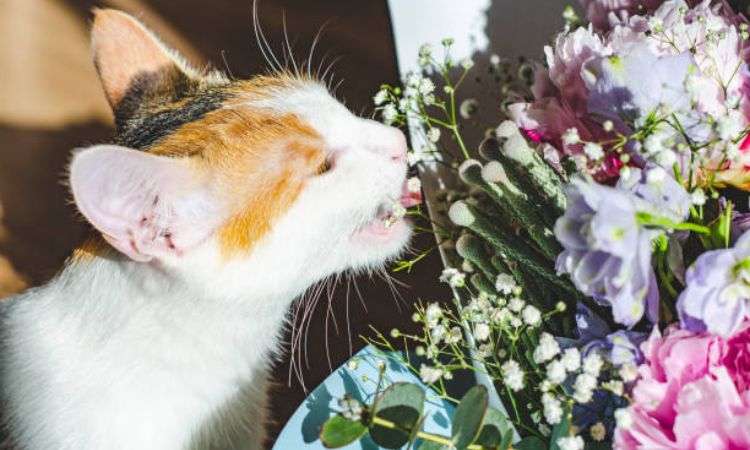
How to Keep Cats Safe Around Flowers
Cats are naturally curious and love to explore their environment—including any plants or flowers within reach. Even seemingly harmless bouquets or houseplants can pose a risk if ingested. Taking proactive steps can protect your cat while still allowing you to enjoy greenery in your home.
1. Keep Plants and Bouquets Out of Reach
Place all flowers, houseplants, and floral arrangements well out of reach of your cat. Remember that cats are agile jumpers and climbers—they can easily reach shelves, countertops, and tables. Consider using high shelves, wall-mounted plant stands, or hanging planters to ensure your plants remain inaccessible. Avoid leaving vases on the floor or low surfaces, where curious paws and noses can investigate.
2. Avoid the Most Toxic Flowers Entirely
Some flowers are extremely dangerous to cats, with lilies being the most critical example. True lilies, daylilies, Easter lilies, and tiger lilies can cause acute kidney failure even in tiny amounts. The safest strategy is to never keep these plants anywhere in a cat-accessible home. For households with cats, consider creating designated no-plant zones or closed rooms for any potentially risky plants to reduce exposure.
3. Use Physical Barriers and Safe Deterrents
When removing plants from reach isn’t feasible, use cat-proof solutions to prevent chewing or knocking over plants:
- Display cabinets with glass doors to protect both plants and curious cats.
- High hanging planters for trailing plants that cats cannot reach.
- Vet-approved deterrent sprays that are safe for cats but discourage chewing.
- Avoid toxic deterrents or home remedies that could harm your cat further.
4. Provide Safe Alternatives to Reduce Boredom
Cats often chew plants out of curiosity or boredom. Offering safe alternatives can reduce the temptation to investigate dangerous flowers:
- Cat grass (wheat, oat, barley, or rye) provides safe chewing and digestion benefits.
- Catnip or valerian plants encourage playful interaction and sensory stimulation.
- Interactive toys and play sessions help keep your cat mentally and physically occupied, reducing interest in unsafe plants.
- Environmental enrichment like climbing towers, hiding spots, and window perches can also redirect attention from houseplants.
See more: Dog suddenly eating grass like crazy
FAQs About Cats and Flowers
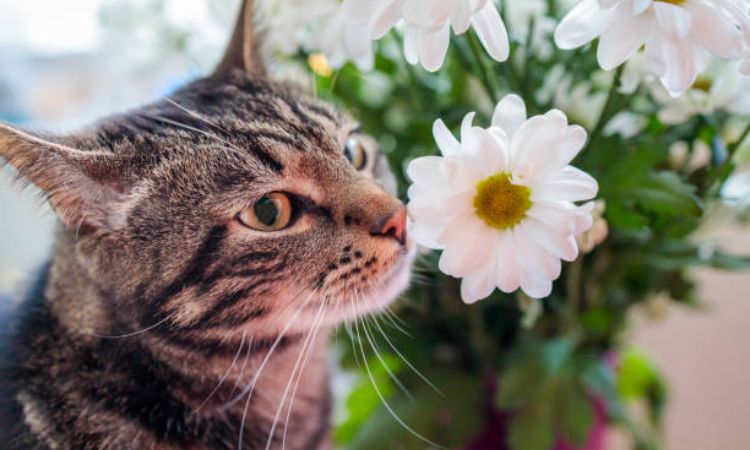
1. Are all lilies poisonous to cats?
Yes. All true lilies including Easter lilies, tiger lilies, Asiatic lilies, and daylilies are highly toxic to cats. Even small amounts of petals, leaves, pollen on fur, or water from a vase containing lilies can cause acute kidney failure. If your cat comes into contact with any part of a lily, seek immediate veterinary care.
2. Are dried or preserved flowers safer than fresh ones?
Dried and preserved flowers are generally less toxic than fresh plants, but they are not completely risk-free. Some plants retain toxins after drying, and dust or pollen from preserved flowers can still irritate a cat’s skin, mouth, or digestive tract. Always check the plant species before bringing dried flowers into a cat-accessible area.
3. Is it safe to have flowers if my cat only stays in one room?
It can be safer, but only if the flowers are non-toxic and cat-safe. Even with a single-room restriction, cats are agile and curious—they may still reach plants on shelves, tables, or windowsills. Ensure the room contains cat-safe flowers, and consider using barriers or elevated displays to prevent accidental chewing or ingestion.
4. Can outdoor flowering plants hurt my indoor cat?
Yes, they can. Outdoor plants or flowers can carry pollen, toxins, or residue on your cat’s fur that may cause irritation or poisoning when your cat grooms itself. Even indoor cats may be exposed if you bring in cut flowers, garden clippings, or pollen on your hands or shoes. Always wash hands and trim or isolate flowers before bringing them indoors.
5. Is pollen on my cat’s fur dangerous if it’s a toxic flower?
Absolutely. Cats groom themselves frequently, so pollen from toxic flowers can be ingested indirectly. For example, lily pollen on fur can be just as dangerous as eating petals or leaves. Always avoid toxic flowers entirely in homes with cats, and if accidental contact occurs, clean your cat carefully and contact your veterinarian immediately.


